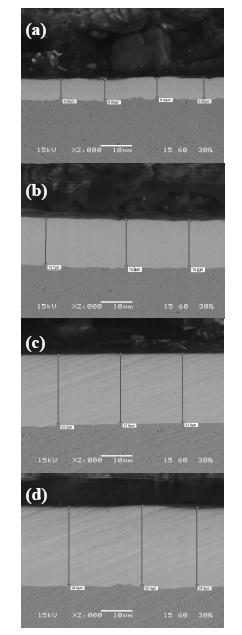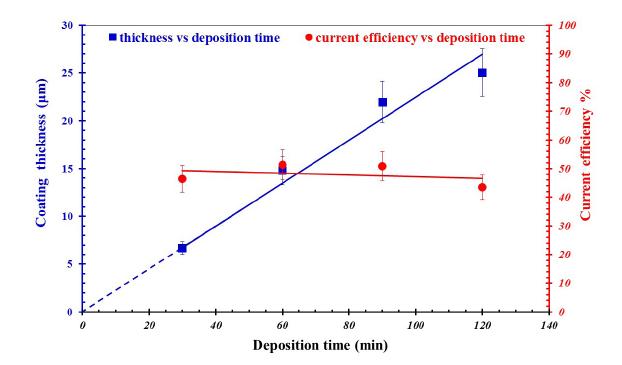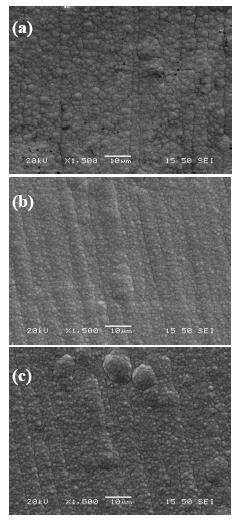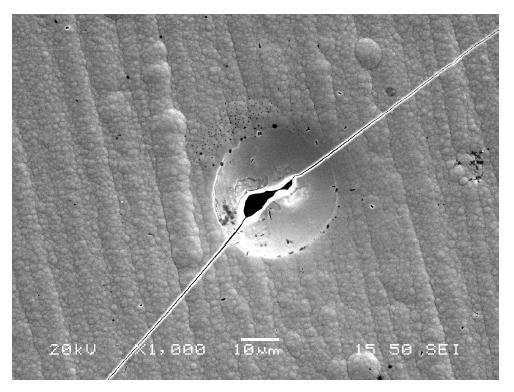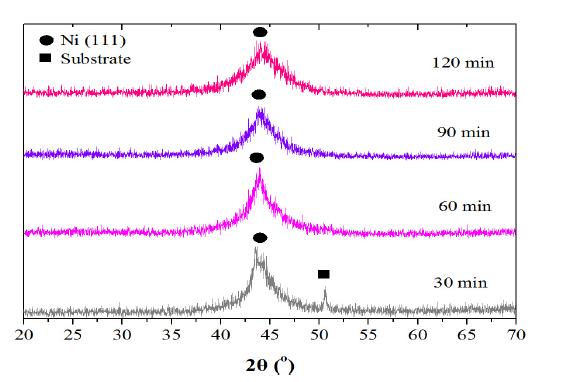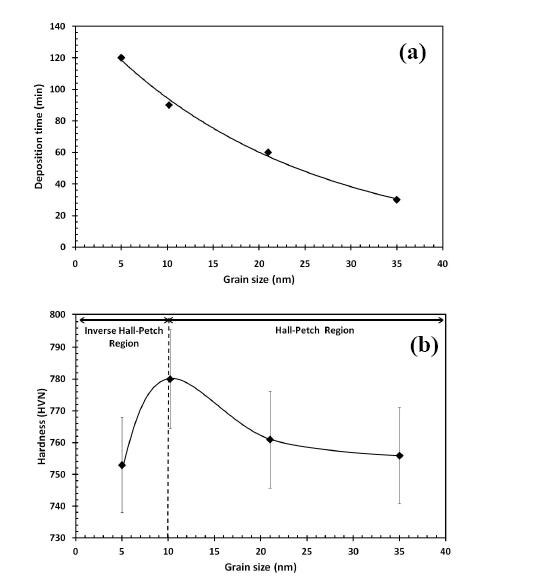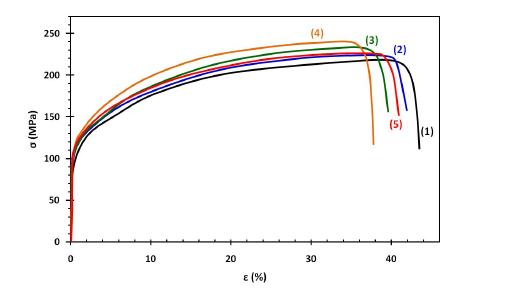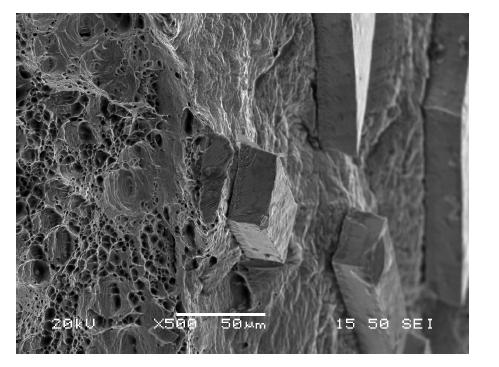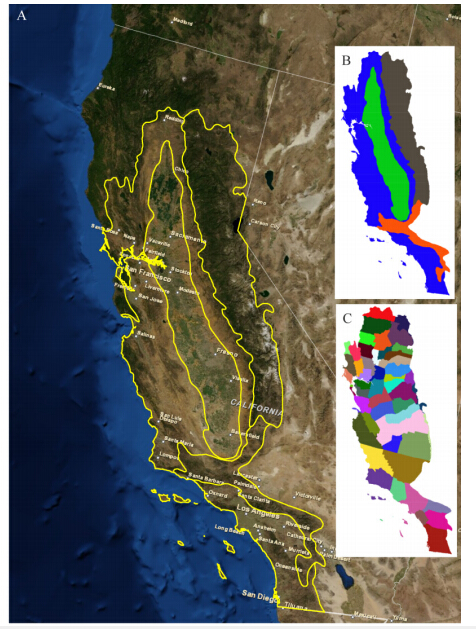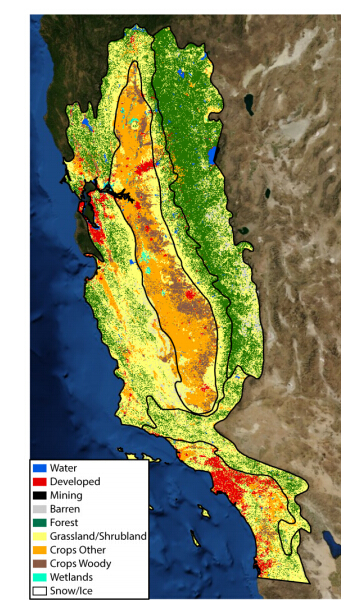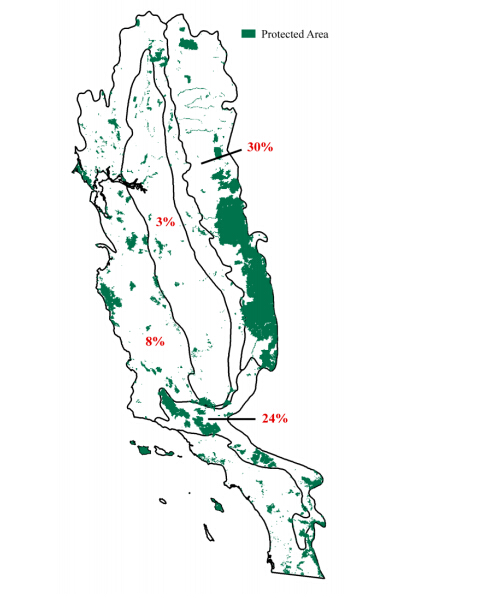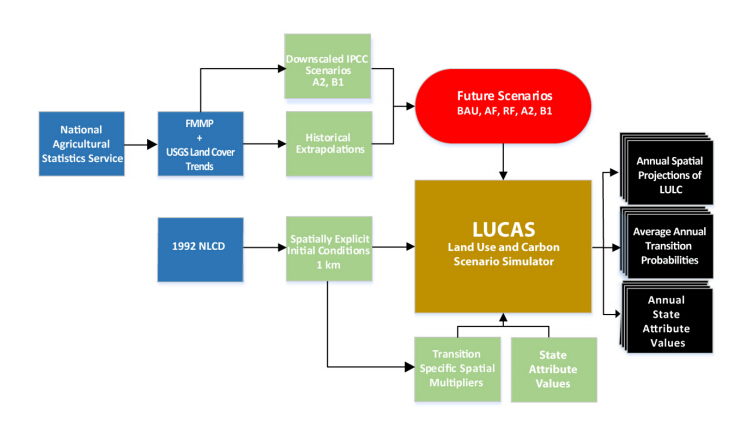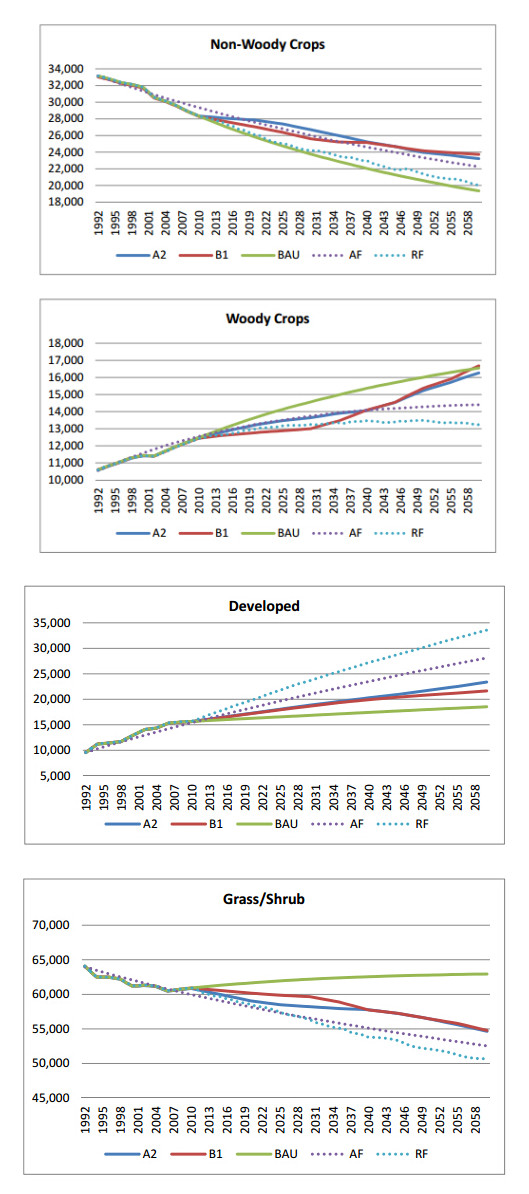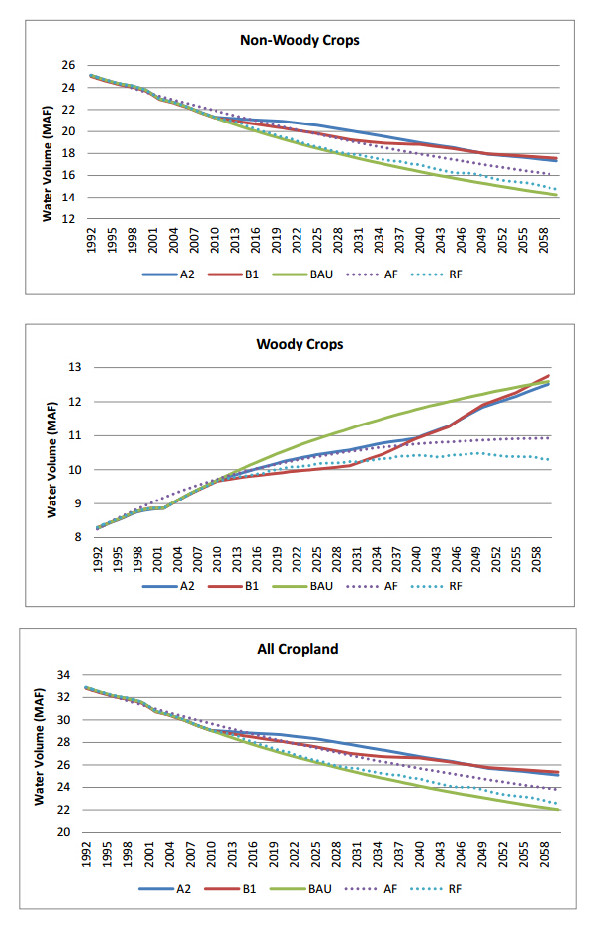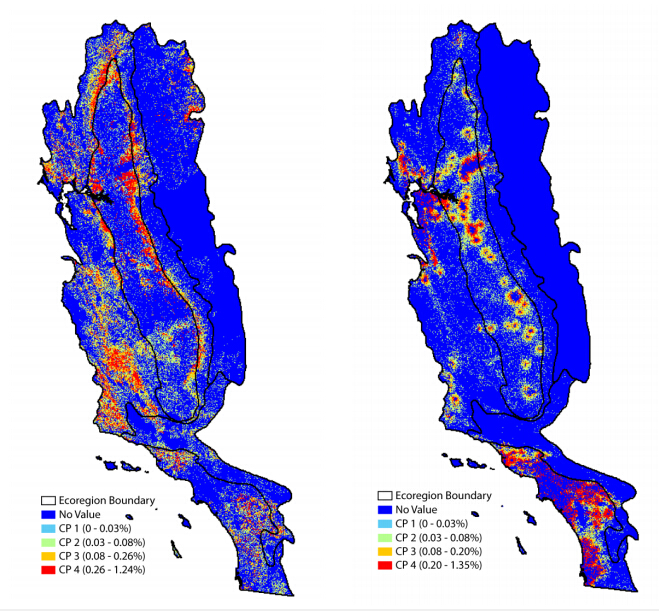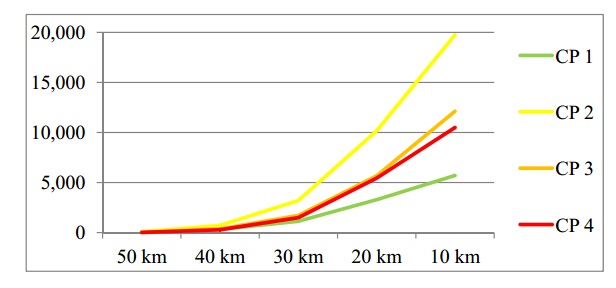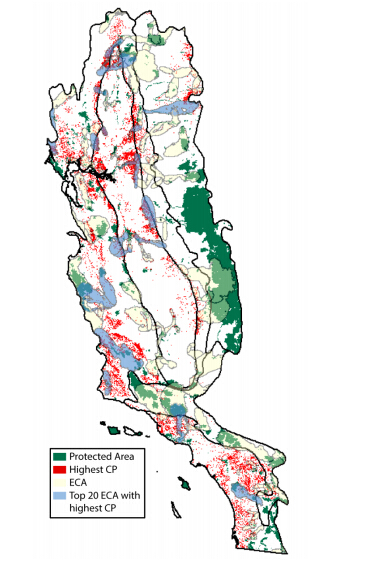1. Introduction
During the last decades there is an increasing interest and a rapid development of new nanomaterials for various industrial and technological applications. Indeed, up-to-date nanostructured materials have been successfully applied, either as coatings or bulk materials, in a wide range of technological fields such as in electronics, catalysis, magnetic data storage, structural and mechanical components etc. [1]. Their wide applicability is due to their superior properties [1], when compared to conventional micro-crystalline materials.
One of the recently developed nanomaterials is the Ni-W system. Ni-W based alloy coatings having different wt.% W content have been deposited onto metallic substrates either by sputtering [2], or electrolytic [3] techniques. However electrodeposition is considered as one of the most important deposition processes for the production of pure and alloyed metallic coatings. It can be easily understood that nanocrystalline Ni-W coatings due to their excellent properties [4, 5] have attracted a lot of attention in the scientific and industrial community. It should be noted that the existing scientific literature focuses more on the surface properties [4, 5, 6], rather than the bulk properties [7, 8] of Ni-W coatings.
This scientific work deals with the properties of Ni-W coated copper and not of bulk Ni-W e.g. foils [7, 8]. In industrial applications and especially in the electronics industry Ni-W is used as a coating on copper and not as a bulk material. Thus, it is considered very important to study the properties of the coated system and not just of the coating itself. For example, in many cases involving mechanical loading, failure occurs at the interface between thee coating and thee substrate and not in the coating. In this perspective the behaviour of the coated system needs to be addressed.
Furthermore, the effect of the coating thickness on mechanical properties of the coated system is investigated. Most of the existing articles focus only on the effect of e.g. composition and microstructure, but they neglect the effect of coating thickness on the mechanical properties of the system. In this work, an attempt is made to illustrate how changes in the thickness of the coating can have an important influence on the microstructure and mechanical properties of the coated system. In this way a structure-property relationship is established for this type of nanostructured coated materials. Finally, research data on the tensile properties of Ni - 40 wt.% W coatings are presented. In existing literature information on the mechanical properties can be found only for Ni-W coatings having a W content up to 30 wt.%.
2. Materials and Method
The substrate material used in this study was a commercially pure copper sheet. From this sheet copper substrates with length 40 mm, width 10 mm and thickness 1.5 mm were produced for the structural study and microhardness experiments, whereas standard tensile specimens were prepared for the tensile experiments. These specimens then were grinded and polished to an average roughness of 1 μm and then annealed at 350 oC for 2 hrs in an Ar-inert atmosphere, in order to remove residual stresses, brought about by the mechanical machining of the samples.
Prior to the electrodeposition process, the copper substrates were ultrasonically cleaned with acetone for 5 min and then rinsed with distilled water. Nickel-tungsten alloy coatings were then electrodeposited on the copper substrates from a sodium citrate aqueous solution, using a two electrodes configuration [9]. Cathode was the copper substrate, whereas the anode was a nickel electrode. The copper substrate and the nickel anode were placed vertically, facing each other. The in-between distance was approximately 30 mm. The used plating bath composition and conditions are given in Table 1. Magnetic agitation was conducted at 200 rpm.
Table 1. Composition of Ni-W plating solution and selected plating parameters
|
Bath composition(g/L)
|
17 NiSO4*7H2O, 147 Na3C6H5O7*2H2O, 46 Na2WO4*2H2O, 27 NH4Cl, 15 NaBr
|
|
Current density (mA/cm2)
|
40
|
|
Deposition time (min)
|
30, 60, 90, or 120
|
|
pH
|
6
|
|
Temperature (o)
|
75 ± 3ºC
|
|
Agitation (rpm)
|
200
|
|
Anode
|
Nickel
|
The surface and the cross-sections of the coatings were studied with the aid of a JEOL 6100 Scanning Electron Microscope (SEM). The chemical composition of the produced coatings was examined with the aid of a NORAN TS 5500 Electron Dispersive Spectrometer (EDS), which was connected to the SEM. With the aid of a SIEMENS D5000 X-ray diffractometer, giving a CuKa radiation from a graphite monochromator, the crystal structure of the grown coatings was studied. Analysis of the obtained X-ray Diffraction patterns was performed with the use of X’Pert HighScore Plus Software. The root mean square (RMS) roughness of the coatings was measured with the aid of a DME Dualscope DS95 Atomic Force Microscope (AFM). The current efficiency (ηc) of the electodeposition process was calculated by applying the following formulas, which are based on Faraday’s law:
where W1 is the weight deposited in g and W2 is the weight expected in g.
where I is the current in A, t is in s, M is the molecular weight in g, n is the number of electrons involved in the electrochemical reaction and F is Faraday’s constant.
The microhardness of the Ni-W alloy coatings was examined in the cross section with the help of a SHIMADZU HMV 2000 microhardness tester, imposing 0.15 N for 15 s. The tensile behavior of the copper substrates with Ni-W alloy coating, having approximately 40 wt.% and various thicknesses, was studied with the aid of an INSTRON 4482 testing system. All tensile experiments were performed at a strain rate of 10−4 s−1, in laboratory air at room temperature. Extensive metallurgical microscopy was performed on the surfaceof Ni-W coated copper specimens after applying various values of tensile elongation. For each set of experimental conditions, five independent tests were carried out.
3. Results and Discussion
The cross section of Ni-W coated copper specimens, deposited for (a) 30, (b) 60, (c) 90 and (d) 120 minutes are presented in Figure 1. All coatings were free of intensive pores or cracks, especially at the interface of the electrodeposited alloy coating with the copper substrate. This observation is indicative of good adhesion between the coating and the substrate. In addition, the average thickness of the studied Ni-W coatings was calculated by using Image Analyzer Program and is presented as a function of deposition time in Figure 2. The thickness of Ni-W coatings increases almost linearly with deposition time, indicating a relatively constant deposition rate throughout the deposition process. In Figure 2, the effect of deposition time on the current efficiency of the deposition process is presented. No significant influence of the current efficiency with deposition time (for the examined deposition conditions) was observed. Furthermore, the calculated current efficiency values are in agreement with those reported in literature [3] and in other research articles [10, 11].
Surface analysis of the Ni-W electrodeposits, having different thicknesses, showed that in all cases a typical nodular structure was obtained, Figures 3(a), 3(b), and 3(c). For the used experimental conditions, the size of nodulus is seen to increase with increasing deposition time, whereas for the growth of the coating follows the topography of the copper substrate. However, for deposition times equal to 120 min localized cracking of the coating was observed, Figure 4. This phenomenon can be attributed to the residual stresses, which are brought about mainly by hydrogen uptake during the electrodeposition process. Indeed, it has been proposed [12] that during the electrodeposition process hydrogen dissolution into metallic matrixes leads to an expansion of the materials lattice. However, subsequent release of the diffused hydrogen causes the occurrence of tensile stress, due to a shrinkage of the lattice. In addition, higher tensile stresses are observed with increasing deposition time, for the same plating conditions, as a higher hydrogen fugacity in the surface layers of the material occurs [13]. If the tensile stresses exceeded the Ultimate Tensile Strength (UTS) of material localized rupture and the formation of cracks occurs, as seen in Figure 4.
The surface topography of the electrodeposited Ni-W coatings was investigated by AFM analysis. Typical 3D profiles of the surface of Ni-W coatings deposited for 30, 60, 90 and 120 min are presented in Figure 5(a), 5(b), 5(c) and 5(d) respectively. It can be clearly seen that during the initial steps of the electrodeposition process, the coating growth is following the surface topography of the copper substrate, Figure 5(e). An increase of deposition time results in a more homogenous growth of the coating and to a smoother surface finishing. Indeed, the surface roughness (RMS) of Ni-W coatings was observed to decrease with increasing deposition time, for the selected plating conditions, Figure 5.
From the X-ray diffraction spectra, presented in Figure 6, the following can be observed:
· Peaks from the Cu substrate can be detected for a deposition time equal to or lower than 30 min. This is due to the fact that the penetration depth of X-rays (10 μm) is greater than the thickness of the coating (about 6 μm). Due to overlapping of X-ray peaks of Ni (111) from the Ni-W coating and Cu (111) from the copper substrate an asymmetrical spectrum is obtained for the deposition time of 30 min. However as of the coating becomes thicker the symmetry is also increased.
· Ni-W alloy coatings containing approximately 40 wt.% tungsten are consisted of solid solution of tungsten in nickel. This finding is in partial agreement with nickel-tungsten equilibrium phase diagram [14], as no Ni4W intermetallic phase was detected. This can be due to the relatively low resolution of X-ray Diffraction techniques which can detect metallurgical phases with a higher than 5 Vol.% concentration.
· With the aid of the Debye-Scherrer equation [15], the grain size of the coatings was calculated, Figure 7(a). It can be observed that the increase of deposition time resulted in a decrease of the average grain size of Ni-W coatings. This phenomenon can be possibly due to epitaxial phenomena (micro-crystalline substrate) during the growth of the coating and to the increase of stresses with increasing deposition time, as described previously. The calculated grain size values are in agreement with the experimental work of Auerswald and Fecht [16].
· A shift of the main Ni peak in comparison to the theoretical Ni (111) peak, towards smaller diffraction angles, is observed. This is mainly due to macro-strain residual stresses brought about by the synergetic effect of solid solution formation [16] and hydrogen diffusion [17].
The average microhardness values of the produced Ni-W alloy coatings as a function of their grain size are presented in Figure 7(b). Indeed, a grain refinement of the coating was observed with increasing deposition time, Figure 7(a). Thus, according to Hall-Petch theory a higher hardness is expected [18]. However, further increase of the thickness results in lower microhardness values. This decrease can be attributed to:
(a) the existence of micro-cracks in the samples deposited for 120 min which degrade the mechanical characteristics of the coating (see Figure 3)
(b) the grain size is about 5 nm, thus the coating is in inverse Hall-Petch region. It has been proved that Hall-Petch relationship is only valid for grain sizes up to approximately 10 nm [19] for electrodeposited Ni coatings. From this critical value on, further grain size refinement leads to softening of the nanocrystalline material. Several interpretations for this softening behavior have been proposed. The most common explanation is that below the critical grain size, the nanocrystalline materials cannot support the dislocations anymore [20]. Hence the deformation mechanism changes from dislocation movement (up to critical grain size) in the Hall-Petch regime to grain boundary sliding (below critical grain size) in the inverse Hall-Petch regime, as indicated in Figure 7.
Figure 8 shows the engineering stress-strain curves for the copper specimen in comparison to Ni-W (with different thicknesses) coated copper specimens. From this figure, it can be observed that the Ni-W coated copper specimens had a higher UTS than bare copper. It has been proposed [21] that the UTS of a composite laminate material can be given by the following equation:
where: Pt is the UTS of the laminate material, Ps is the UTS of the substrate (copper), Pc is the UTS of the coating (Ni-W coating) and Vs and Vc are the % Volume of the substrate and coating respectively, when compared to the total volume of the laminate material. In addition, is widely known that the yield strength (σ) of metallic materials can be related to their Vickers hardness (HVΝ) by the experimental equation [22]:
Therefore, by taking into consideration equations (III), (IV) and the microhardness values given previously (Figure 7), it could be said that the deposition of Ni-W coatings on the copper substrate will possibly lead to higher UTS values, when compared to those of bare copper. In addition, the higher the hardness and/or volume of the coating the higher the UTS of Ni-W coated copper.
Despite the fact that the presented experimental results are in complete agreement with “classical” macroscopic deformation theories, the microscopic phenomena occurring during tensile deformation are much more complicated. Up to now no universal approach has been established on the deformation mechanisms occurring in materials having a grain size between 10 nm up to 1µm [22]. This is due to the fact that various phenomena such as grain boundary sliding, localized dislocation generation and movement, shear-band formation, twinning etc. can coexist in nanomaterials [23]. Furthermore, the existence of defects are found to have a detrimental effect on the properties of nanomaterials.
From figure 8 it could also be said that the ductility of Ni-W coated copper was found to be lower than the ductility of bare copper. The above observation can be attributed to the fact that the presence of surface layers block the egress of dislocations from the metallic substrate to the surface layer [24]. Thus, the lower the movement and multiplication of dislocation in the bulk substrate results in the decrease of ductility of the coated specimen. Another observation that could be made from figure 8 is that the ductility of Ni-W coated copper decreased with increasing thickness. This observation can be attributed to low fracture toughness [25] of the brittle Ni-W coatings in comparison to the ductile copper substrate. Indeed, analysis of the fractured surfaces by SEM technique indicates the brittle fracture of the coating by cleavage and the ductile fracture of the copper substrate, as it consists of dimples, Figure 9. This experimental finding is in complete agreement with the work of Panagopoulos et al. [9] on the scratch testing of nanocrystalline Ni-W coatings on copper. According to these investigators intensive brittle fracture and delamination of the Ni-W coatings is observed even at an early stage of the scratch test, indicating that the difference between the fracture toughness of the coating and the substrate is the main reason for mechanical failure of these coatings. Furthermore, it has been reported that the ductility of nanomaterials is lower that of conventional micro-crystalline materials mainly due the presence of defects from the synthesis process, and to tensile and shear instability [23].
A number of tensile tests were also conducted on the Ni-W coated copper specimens, with an average thickness of 21 μm, in order to study the appearance of surface cracks with increasing applied strain on the laminate material. Figure 10(a), 10(b), 10(c) and 6(d) show the density of cracks formed in the center of the coatings surface, for applied strains of 7%, 14%, 21% and 30% respectively. By comparing these figures it could be said that the increase in applied strain during tensile testing has led to an increase in number and size of surface cracks formed on the surface of the coated specimen, Figure 11. The higher crack densities acquired with increasing applied strain values are attributed to the difference ability of deformation between the substrate and the coating [26]. An approximate calculation of the number of cracks per coatings length and the width of cracks as a function of applied strain is presented in Figure 11.
4. Conclusion
In this work, the mechanical behaviour of Ni-W coated copper was studied. The main conclusions are the following:
1. Ni-W coatings having 40 wt.% tungsten and a thickness of 5 up to 25 μm were electrodeposited onto copper substrates. In all cases a nodular morphology was observed, whereas the coatings were consisted of a nanocrystalline solid solution of tungsten in nickel. In addition, the surface roughness was observed to decrease with increasing coating thickness, for the selected plating conditions.
2. The microhardness of these Ni-W coatings was found to increase with increasing coating thickness up to 21 μm. This is mainly to the grain refinement of the coating. Further increase of the thickness results in a lower microhardness of Ni-W coating, due to the propagation of cracks during the deposition process and to the formation an average grain size within the inverse Hall-Petch region.
3. The ultimate tensile strength (UTS) of Ni-W coated copper specimen was higher than that of bare copper. This phenomenon can be attributed to the presence of surface layers which block the egress of dislocations from the metallic substrate to the surface layer.
4. The ductility of Ni-W coated copper was significantly lower than that of bare copper. This decrease was attributed to the brittle fracture of the Ni-W coating.
5. The increase of applied strain during tensile testing has led to an increase in number and size of surface cracks formed on the surface of the coated Ni-W specimen. This is attributed to the difference ability of deformation between the substrate and the coating.
Conflict of Interest
Authors declare that there is not conflict of interest.









 DownLoad:
DownLoad: 